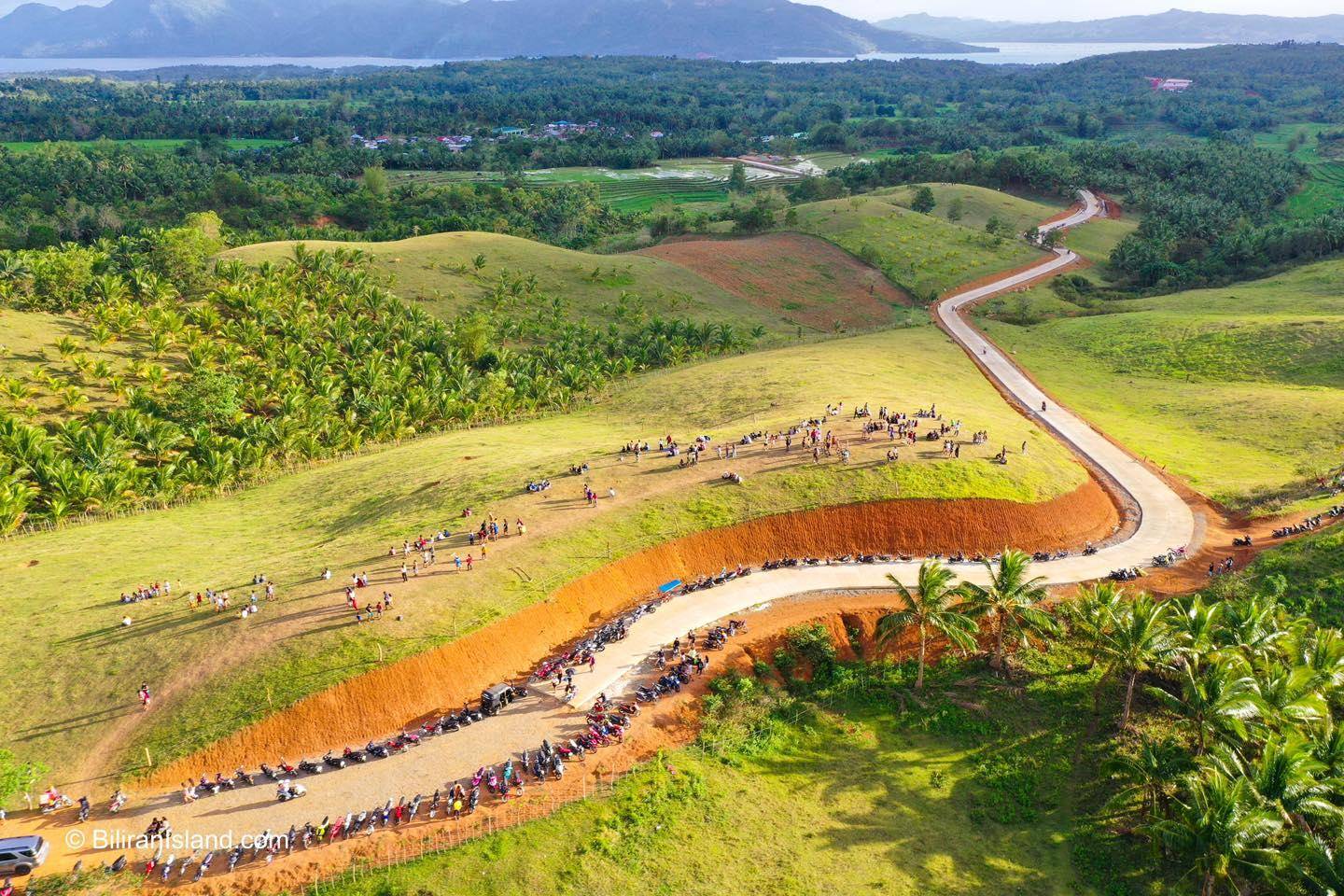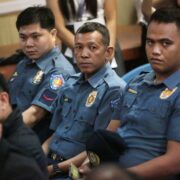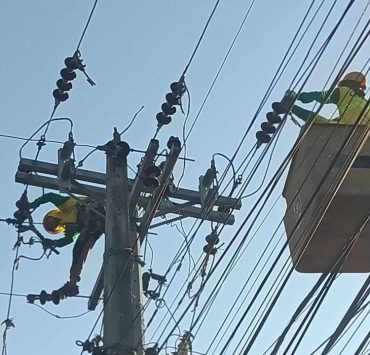Rich history behind Biliran nature park

BILIRAN—People flock to a nature park named after a fodder grass that still thrives in these foothills, originally cultivated for a former cattle ranch.
These tourists, however, do not realize the rich history behind Kumpay Nature Park in Barangay Canila, about 4 kilometers from the Biliran town proper.
In the 1760s, the Spanish colonial government experimented with the secularization of parishes in Eastern Visayas. At the time, the islands of Leyte and Samar were served by the Jesuit missionaries, who had been in the region since 1595.
Biliran Island was removed from the Jesuit coverage in 1765 by the Diocese of Cebu and was assigned a Secular priest, Padre Gaspar Ignacio de Guevara who introduced a death-related ritual, which filled a major gap that the Jesuit missionaries failed to address. This was the home-based “Novena sa mga Kalag sa Purgatorio” (Nine-Day Prayers for the Souls in Purgatory) for somebody who had died.
The novena in the native language with some Latin insertions was led by a female mananabtan (prayer leader) in the home of the dead, with neighbors and community members as “mananabat” (group respondents). It is a tradition that spread across the Visayas and Mindanao and is still performed until the present.
Before this home-based novena, a missionary could only perform proper death-related rituals on three out of 10 people who died in the churches of his assigned communities, as recorded by Jesuit Fr. Francisco Alcina in 1668.
Biliran religious revolt
Padre Gaspar was born and grew up in Paranas town, Samar, a pueblo served by the Jesuits based in the Catbalogan Residencia (headquarters). His family name, Ignacio, might have been provided by the Jesuits in honor of their founder, San Ignacio de Loyola. It must have been the Jesuits who endorsed him to study for the priesthood in Cebu.
Then the Jesuits were expelled from the Philippines in 1768 and were replaced by the Augustinians in Leyte and by the Franciscans in Samar.
Padre Gaspar did not take lightly the Jesuits’ expulsion and protested it with a religious revolt that generated mass-based support all over Leyte and Samar over the next few years.
After the Jesuits were expelled, Padre Gaspar pulled out the población of Biliran pueblo from its original site in the village of Nasombol, to the present Barangay Caraycaray of Naval town.

He transferred the población to the forest some 10 km southeast of the old site and some 5 kilometers north of the present Biliran town center. He set up a sanctuary in Albacea Hill in Barangay Hugpa, enthroned himself in the “chair of Peter” with the royal throne on Biliran Island, and styled himself as the “first among the priests of the world.” His acts were reported by the Franciscans who replaced the Jesuits in Samar.
From this sanctuary, Padre Gaspar spread his doctrines, granted indulgences, spread news of miracles in the Leyte-Samar region, recruited and sent out disciples to incite revolts, conferred sacred orders, gave out offices, legislated, and threatened those who opposed him.
Together with an alcalde mayor (governor) of Biliran that he appointed, he also fought against the Franciscan friars in Samar and the Augustinians in Leyte. He ordained sub-deacons, and attracted a great number of followers, especially among women.
He restored the precolonial babaylan-types as religious and prayer leaders, which the Spanish missionaries forcibly suppressed during the early colonial years. These women were labelled as “babaylanes” (priestesses), witches, and sorcerers” by an Augustinian friar assigned in Leyte.
Yet, Padre Gaspar was cordially treated and sheltered by the Spanish alcalde mayor of Samar, which included Leyte until 1777, who also worked with him.
Padre Gaspar influence was reported by the Franciscans as strong in the pueblos of Guiuan, Basey, Villareal, Calbiga, Paranas, Gandara, Catubig, Sulat, and Borongan on Samar Island. His influence was also felt in the pueblos of Catarman, Laoang and Capul. Near Borongan, a female disciple set up a sanctuary and large groups of people would travel there in procession with lighted candles.
In Leyte, an Augustinian friar reported in 1770 that children from six to 12 years would run away upon seeing priests from their order. This behavior was attributed to the babaylanes who had announced in all pueblos that the new priests in white habits had orders to maim boys and send them to Europe, to be used as fishing bait or to fatten the tigers of the King of Spain.
Padre Gaspar was captured and killed by Moro raiders in 1774.
Folklore and place-names
Extant folklore and place-names in Biliran town provide other details and nuances of Padre Gaspar’s career as a revolutionary, though heretic priest.
After Padre Gaspar’s death, his hundreds of followers abandoned his settlement and it assumed the name of Binongtuan (old town site).
Historical marker
In 2006, this writer researched and wrote a paper about the Biliran Religious Revolt that was presented in a national history conference and published in a journal. The paper was used as basis by the National Historical Institute (now National Historical Commission of the Philippines) for the installation of a marker for the Biliran event.
The best place for installing the historical marker would have been the Padre Gaspar Shrine on Albacea Hill. But it was considered too far and inaccessible to the ordinary public. Only pilgrims from Samar would make occasional group visits to this site by climbing a steep hillside after hiking for some 1.5 kilometers from the barangay proper of Hugpa.
The marker was installed in a Spanish era watch tower closer to the población. This tower, with upward extension from its four corners, had similar features with an artifact tower in an ancient Jesuit mission station in Paraguay.
The marker was unveiled on September 10, 2008, the 296th anniversary of the founding of Biliran pueblo in 1712. It is the first national historical marker installed in the province.
Ignored suggestions
Since the installation of the marker for the Biliran Religious Revolt in 2008, there had been suggestions for the local officials to propose a road project that would make it easier for pilgrims and visitors to reach and access the Padre Gaspar Shrine in Biliran. But the suggestions fell on deaf ears.
A few years ago, another government agency offered funding for a road project that could include access to the shrine area. But this failed to make headway because of “private property issues.”
Then a road project that was supposed to link Barangay Canila and Barangay Pinangomhan for a safer and faster transport of people and agricultural products inadvertently ended up providing an access road to Kumpay Nature Park .
Incidentally, the nature park is about one kilometer east of the Padre Gaspar Shrine. A new access road linking the park to the shrine would likely also bring crowds of pilgrims to the latter place, and not just the tourists.
This would complete a historical cycle that brought hundreds of people to settle in this place for a decade three centuries ago. —CONTRIBUTED INQ
By Rolando O. Borrinaga

















